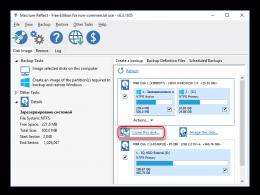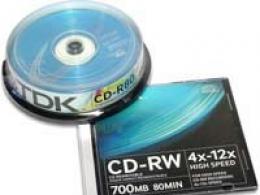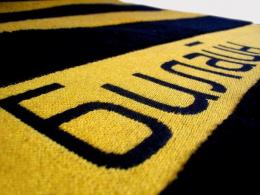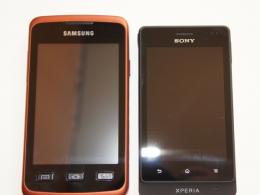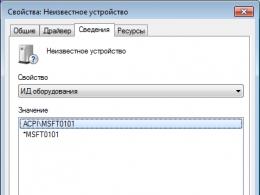The keyboard freezes. The computer does not respond to the mouse: reason, solutions
Question one from Gennady:
Hello Konstantin, I learned a lot from your lessons, but I ask for help and I think I’m not the only one Regarding the issue of the cursor freezing and, as a result, the entire keyboard turning off, it does not react in any way. I read a lot of responses on the forums, updated the drivers, disabled the checkboxes in the USB controllers, cleaned them with utilities, but nothing helps. Sometimes the cursor turns off at the very beginning, sometimes after two hours, and sometimes after a few days, but after a hard shutdown and reboot it works again. Help with this problem, please. I have a Lenovo z585 laptop.
Malfunctions that occur from time to time and without any pattern are the most difficult to correct. This may require a lot of time and a number of experiments.
What would I do:
- I checked the mouse, for which I would exchange it with some other computer where it is known to be working. And I would see how another mouse would behave on my computer, and my mouse on that second one.
- I would work with my mouse in Windows safe mode for a few days. If there were no problems, then the problem is in the Windows settings (primarily the video card driver and the mouse itself).
- I tried the mouse using all available USB connectors.
- I bought an adapter and would connect this mouse to the PS/2 connector (the round one), instead of USB.
You also write that the keyboard freezes along with the mouse cursor. Those. It turns out that the computer does not respond to any of your actions at all. So maybe it’s not the individual mouse and keyboard that are freezing, but the entire system? Then the freezing of the mouse and keyboard is a consequence of a more general problem, and not its cause.
To find out, you need to, again, work in safe mode. Perform stress tests of RAM, hard drive, video card. And, of course, check the temperature of the processor, maybe it simply overheats and the computer freezes.
First question from Elena:
Hello Konstantin. Answer please. I have a laptop, battery removed(advised by the master), the laptop runs on electricity. Every time I finish working, I turn it off completely: I exit all programs, turn off all social networks if I am on them for communication, that is, I go to the desktop, click on the start and shutdown button, then unplug it from the electrical outlet. I turn it on in reverse order. Question: Am I doing everything correctly and did I have to remove the battery from the laptop? Doesn’t this harm the laptop? when the electric light is turned off while the laptop is on and if it harms, then how. This happens, the lights can be turned off without warning. I live in a village and use my laptop only at home and don’t go anywhere with my laptop. Thank you.
There will be no harm to the laptop if the lights are turned off during such work. But you can lose data if, for example, an unsaved document is opened during a shutdown.
But what purpose was set when removing the battery from the laptop is unclear to me. If you extend the life of its normal operation, this, on the contrary, can shorten it. If it just sits there, the battery will discharge over time, and storing it in this state will only harm its life. The battery is designed to work, this is its normal state.
And besides, if you have a laptop with a battery, then if the power goes out it will continue to work, which will save your data from loss. It's more convenient and safer.
Perhaps the purpose of removing the battery from the laptop was different, I don't know all the details.
Operating system errors that affect the operation of peripheral devices are detected after the main OS boots. Check the keyboard's functionality in the BIOS (Basic Input Output System). To do this, after the initial hardware scan and the POST sound signal, press the F10 or Delete key, depending on the BIOS version, and open the menu items one by one. If the keyboard does not work, then there is a technical problem.
If you have a mouse and keyboard with ps/2 connectors (small round 6-pin connectors), make sure that you do not mix up the mouse and keyboard ports when connecting. They are marked with the color or images of these devices. Make sure the pins in the connectors are not bent or broken. Check the functionality of the mouse and keyboard on another computer.
Connect devices to the ps/2 connectors only when the power is off, otherwise a short circuit may damage the port.
The south bridge on the motherboard may be overheating. Remove the side panel of the system unit and find 2 large chips on the motherboard. Carefully try the bottom one. If the chip is too hot, it makes sense to contact a computer service center.
Remove the coin cell battery that powers the ROM chip from the connector on the motherboard. Briefly bridge the electrodes in the connector with a screwdriver for a few seconds to reset the BIOS settings to factory settings. This will help if you unsuccessfully changed something in Setup.
Operating system errors
The mouse and keyboard may freeze due to malware. Download the LiveCD image with antivirus programs installed from the DrWeb or AVP sites and burn it to a CD. In the BIOS, set the boot order from the CD or DVD drive and boot the computer from the disk. Check your system with an antivirus.
If your mouse and keyboard freeze when booting from a LiveCD, the problem is with those devices or with your motherboard.
The blocking may be caused by incorrectly installed drivers or other programs. Turn on your computer and press F8 after the POST signal to bring up the Windows boot options menu. If you have Windows 8 installed, use the Shift+F8 keys to open the menu. Select "Safe Mode". If devices respond to your actions in Safe Mode, uninstall recently installed software.
Press Win and in the “Programs” section select “Accessories”, then “System Tools” and “System Restore”. Following the instructions in the recovery wizard, depending on the version of Windows, specify the nearest date for creating the checkpoint.
Both beginners and professional users of computer systems can sometimes encounter the fact that the computer stops responding to the mouse and keyboard. Unfortunately, no one is immune from this. It doesn’t matter at all whether you are working with a desktop computer or a laptop, as long as you use external devices. Next, it is proposed to consider several main reasons for this unpleasant phenomenon and several methods for correcting the current situation.
Why doesn't my computer respond to my mouse and keyboard?
Speaking about the reasons, it’s probably worth starting with the worst. For now, let’s leave aside the problems associated with any one of the devices, and let’s focus on cases when the computer does not respond to both the mouse and the keyboard. Most often, this problem can occur on laptops. Most technicians claim that this is due to a failure or malfunction of the south bridge. It is in this case that all equipment can work, just except the manipulator and keyboard. However, this is, so to speak, a special case.
As for other, no less common situations, most often the problem is associated with equipment failure, although even completely trivial cases can be encountered. So, for example, if the computer stops responding to a USB-type mouse, this does not mean at all that the mouse is out of order.
It may very well be that the power button on the device itself is disabled or the batteries have become unusable.
The computer does not respond to the mouse: possible problems
As for problems with manipulators specifically, when PS/2 standard devices are used, connected to stationary computer units through special connectors on the motherboard, damage to the connectors themselves cannot be ruled out. Quite often you can encounter problems associated with the effects of viruses or driver crashes.

At least, on all sorts of Internet forums, messages are often published that when the operating system starts, the computer does not respond to the mouse, but after putting it into a sleep state from the keyboard and then exiting it, everything falls into place and the manipulator works like nothing happened. Apparently the problem is with the drivers.
Finally, it is rare, but it is possible to encounter situations where the cause of a mouse failure is software installed by the user, although it is not known for certain why such a conflict occurs. But the fact remains a fact. If the computer does not respond to a mouse button or wheel action, there is either a mechanical fault or an incorrect setting in the operating system. As is already clear, you should check both the mouse and the settings for buttons or scrolling.
Reboot and reconnect devices
So, now let's move on from considering the causes of failures to options for eliminating them. In cases where the keyboard on laptops does not work properly, you can suggest disassembling it (remove all the buttons), and then thoroughly clean it or wipe it with a damp cloth. This is where a lot of dust and dirt can accumulate. And if you consider that many young people like to work on a laptop while still chewing a sandwich, you understand...
In the case of a manipulator, when the mouse does not respond, you can suggest that the first step is simply to reboot the system. If this does not help, you can try to reconnect the device.

For USB keypads, you can use the so-called hot reconnection while the system is running. Just try plugging the mouse into a different port. But PS/2 devices need to be turned on again only when the power is turned off. If the effect is zero, check the functionality of the mouse on another terminal, and for yours, try connecting a known working device to find out if there are problems with the connector or port itself.
Driver problems
You can often observe problems with drivers, despite the fact that there is no need to install any special drivers for the most common devices (not counting specialized game controllers) of any standard. However, as an option, you can perform some steps to reinstall them.

To do this, simply enter the “Device Manager”, remove the installed manipulator from the list and reboot the system. When restarting, it will automatically detect the connected mouse and reinstall the drivers.
Many may object to calling the “Device Manager” itself. Use the keyboard for this. First, call the Run console (Win + R), then enter the command devmgmt.msc, and in the Manager that appears, navigate using the tab, arrow, delete and enter buttons.
Recently installed software
As for the software that could cause such conflicts, in the Programs and Features section, just check which applications you installed recently, and just before the crashes appeared.

If necessary, simply uninstall the selected software, just in case, reboot the system and check how the mouse behaves.
Rolling back the system to a working state
In principle, if a problem arises that the computer does not respond to the mouse, sometimes all of the above actions with drivers or rebooting may not be necessary. As practice shows, in most cases, if problems are related specifically to software failures, it is best to use a system rollback to the time point that preceded their appearance.

In this case, you can use the corresponding section in the “Control Panel”, which is called up through the “Run” menu with the control command, or force a reboot of the computer system several times by long pressing and holding the power button. The method, of course, is barbaric, but sometimes it can still be used. When starting the recovery, you will just need to follow the instructions of the “Wizard”, and if necessary, select a rollback checkpoint from the extended list yourself.
Virus check
Finally, it is believed that computer viruses have a particular influence on the occurrence of problems associated with the fact that the computer does not respond to the mouse. Not all of them, of course, but some specific threats are indeed capable of causing such failures. The solution to eliminating the problems is obvious: the system should be checked for the presence of such threats, and if identified, they should be neutralized.
But what tools should you use to scan? It is clear that in this case you cannot rely on the standard antivirus installed on the system, since it has already missed the threat. In this case, portable software is considered the most relevant. Most often, programs like KVRT, Dr. are recommended for use. Web CureIt! and the like, but only with the obligatory update of the anti-virus databases before launching. And you need to select for scanning not only the hard drive (system or logical partitions), but also all hidden or boot areas.

But the most powerful tool of our time, no matter what anyone says, are utilities with the general name Rescue Disk, which have their own bootloader with which you can boot from a removable storage medium and perform a deep scan of the computer system and RAM even before activating the start of the existing one. operating system on the computer, which significantly increases the chances of identifying and neutralizing threats. By the way, it is these utilities that find and neutralize almost all viruses known today.
Instead of a total
This is briefly all that concerns troubleshooting problems with paddles and keyboards. It remains to be said that only isolated situations were considered here, but the appearance of problems can be influenced by several factors at the same time. So in this case, you will have to consistently find out the reasons for the failures and only after that choose the preferred means of correcting the situation.

